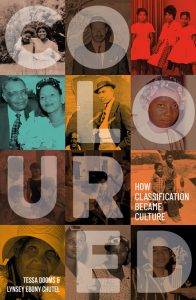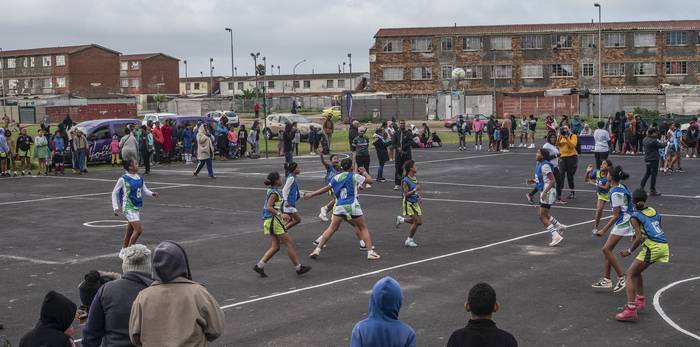Ons kos: In places like Lavender Hill, a township on the Cape Flats bordering Muizenberg, the aromas of home food are of Cape Malay origin, including tamatiesmoor. Photo: Brenton Geach/Gallo Images
Somewhere in Noordgesig, one of Johannesburg’s oldest and most storied townships, their scent winding through the narrow passages of the semi-detached treinhuise, ginger and garlic are sizzling on the oiled base of a warped weekday pot.
In Durban’s Sydenham, in a narrow kitchen packed with family heirlooms and towers of Tupperware, on the stove, bay leaves, curry powder, elachi, jeera and dhanya dance on the sweet, translucent onions, the come-hither call that it’s time to eat. In Lavender Hill, where the backyards cram up against each other on the wrong side of Table Mountain, the sugary base of a tomato smoortjie sprinkled — or doused — with curry powder tickles the nose as its surface bubbles and plops like lava.
In Douglas, you can hear sneezes from the clouds of white pepper that turn green beans into groenboontjies, adding to the Northern Cape heat. And in upmarket Sandown, amid its fine dining and fast food, the nostalgia of pilchards has come for a visit.
These osmic identities waft through Coloured homes all over the country. In any culture, food is a marker of community.
Recipes carry our memories; ingredients carry our stories of struggle or wealth. Huiskos, quite literally “home food”, is the meal we come home to. Often, when that stinging criticism is levelled that Coloured people have no culture, I know it is not true by virtue of the plate of food lovingly and uniquely put down in front of me at family gatherings. Like any culture, we have borrowed, we have reinvented, but we have also preserved our identities on that plate.
Huiskos is the seat of a memory for most cultures. It is not only in the recipes passed down from one generation to another, but in the flavours and aromas that bring connection and a sense of identity. Try as we might to describe it, huiskos does not have a specific flavour — instead, it is the amalgamation of our shared histories dished onto a plate. Yet, as all these smells from all these kitchens show, there is no single food of which it can be said: this one thing is Coloured cuisine.
As I chop the ingredients for a controversial debate, now is as good a time as any to confess that I have only ever eaten bobotie once, as a tourist atop Table Mountain. It’s an unfair critique because it was probably watered down for the sake of tourist palates, but I did not care for it. I am open to anyone willing to convince me otherwise — after all, who would say no to a dinner invitation? — but it did not stir in me a nostalgic longing, let alone an identity crisis. I can still identify as Coloured and not like bobotie. Identity is complex.
Bobotie still deserves a place in the culinary archives of Coloured cooking, even as we deconstruct it. It is a classic South African meal, and its unique flavours of sweet and savoury are the hallmark of the Cape Malay cooking that has become familiar in homes around the country.
Its story is quintessentially South African, capturing the history and complexity of Coloured identity. The first bobotie recipe is believed to have been written in a Dutch cookbook in the early 17th century, but its origins are Indonesian.
It arrived in South Africa with the enslaved Javans brought to the Cape by Dutch colonialists. It’s a testament to, and a tragedy of, the story of colonialism and the erasure of its victims that we do not know who the innovative enslaved cook was who looked around this alien landscape and found the ingredients to recreate his or her own comfort food — a dish that must painfully have reminded those who ate it of a home they were ripped away from and would never see again. Centuries later, that recreated comfort food has since gone on to become something of a national dish in a new land and for a new people.

That forgotten story and the survival of the flavours of bobotok or botok are also a reminder of a common thread that runs through Coloured identity: celebrating some ingredients at the expense of others. The Cape’s enslaved population was made up of people from Africa too, from Mozambique, Angola and Ghana, where there are also unique culinary expressions of identity.
While enslaved Malay people were allowed to keep their religion and some of their identity, thanks to colonists’ modest respect for Islam, enslaved African people were treated as a lower class of slave — their names were changed, their faith lost, their identities stolen.
This is perhaps why foods like xima, the soft corn-based porridge that is the staple of the country that is now Mozambique, never became part of the recorded diet of enslaved people who were later categorised as Coloured. Or perhaps its similarity to pap meant that xima melted into the South African diet, an example of our connectedness before the false separation imposed by colonial borders.
But it’s more likely that, as racism and the colourism it created began to take hold, xima would have exposed a proximity to Black South Africa that would have made it a liability for Coloured South Africans eking out a separate identity according to apartheid law, at the expense and rejection of an African identity.
Despite its power to define a whole family’s destiny, racial classification was, as we’ve seen, also a nastily arbitrary system. When genetic markers like physical features were not enough, it relied on what the apartheid government decided were markers of Colouredness.
Food, alongside language and, more ridiculously, hand gestures and mannerisms, were all used by apartheid-era population registration bureaucrats to determine whether one was Coloured or Black. Officers would ask people what they ate for breakfast or dinner, or how they cook their food, as a signifier of culture and therefore race.
In a 1956 appeal to the Race Classification Board to have her husband’s race reclassified from Native to Coloured, a woman named Martha Goliath gave evidence in favour of her husband Jacob Goliath, with records showing that she told officers, “Middae eet ons vleis, rys en groente”, to prove his proximity to Europeanness.
This decision was made over and over by people forced to forget much more than the food they grew up with — perhaps even to reject the meals their mothers or grandmothers made for them and the memories that went with them. Often, it was a deliberate decision, made to create a clear division between Black and Coloured, us and them. It was also a decision that was rooted in economic pragmatism — being Coloured brought advantages. Either way, it is evidence of how White supremacy has erased the cultural ties it finds inconvenient.
This is an edited extract from Coloured by Tessa Dooms and Lynsey Ebony Chutel. It is published by Jonathan Ball Publishers and costs R270.




















Discussion about this post